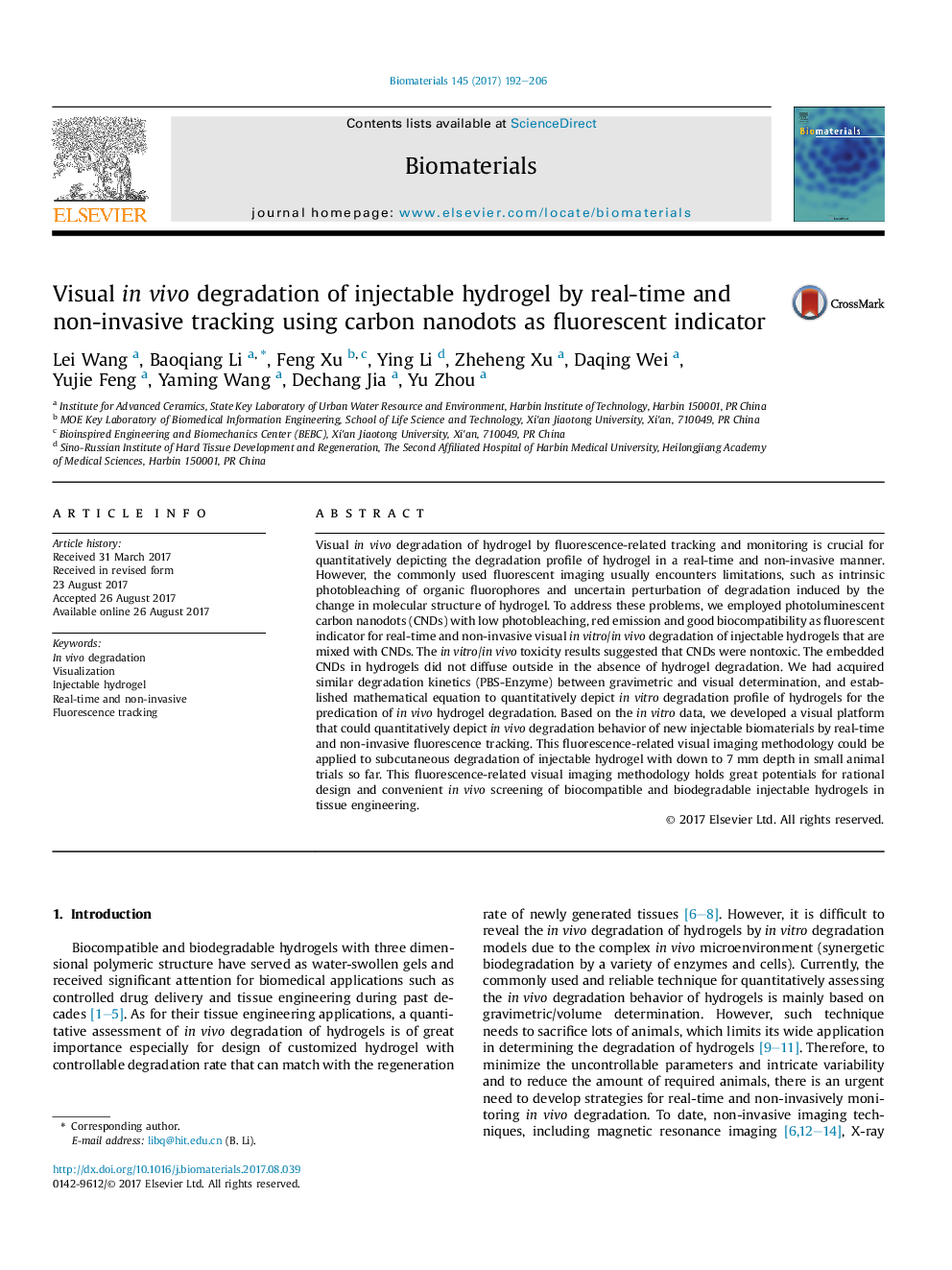| کد مقاله | کد نشریه | سال انتشار | مقاله انگلیسی | نسخه تمام متن |
|---|---|---|---|---|
| 6450512 | 1416122 | 2017 | 15 صفحه PDF | دانلود رایگان |
- Carbon nanodots were first employed as new fluorescent probes for quantitation of degradation of injectable hydrogels.
- The in vitro/in vivo toxicity results suggested that carbon nanodots were nontoxic as biocompatible probe.
- The visual method was developed for evaluating in vivo degradation of biomaterials by real-time and non-invasive tracking.
Visual in vivo degradation of hydrogel by fluorescence-related tracking and monitoring is crucial for quantitatively depicting the degradation profile of hydrogel in a real-time and non-invasive manner. However, the commonly used fluorescent imaging usually encounters limitations, such as intrinsic photobleaching of organic fluorophores and uncertain perturbation of degradation induced by the change in molecular structure of hydrogel. To address these problems, we employed photoluminescent carbon nanodots (CNDs) with low photobleaching, red emission and good biocompatibility as fluorescent indicator for real-time and non-invasive visual in vitro/in vivo degradation of injectable hydrogels that are mixed with CNDs. The in vitro/in vivo toxicity results suggested that CNDs were nontoxic. The embedded CNDs in hydrogels did not diffuse outside in the absence of hydrogel degradation. We had acquired similar degradation kinetics (PBS-Enzyme) between gravimetric and visual determination, and established mathematical equation to quantitatively depict in vitro degradation profile of hydrogels for the predication of in vivo hydrogel degradation. Based on the in vitro data, we developed a visual platform that could quantitatively depict in vivo degradation behavior of new injectable biomaterials by real-time and non-invasive fluorescence tracking. This fluorescence-related visual imaging methodology could be applied to subcutaneous degradation of injectable hydrogel with down to 7 mm depth in small animal trials so far. This fluorescence-related visual imaging methodology holds great potentials for rational design and convenient in vivo screening of biocompatible and biodegradable injectable hydrogels in tissue engineering.
246
Journal: Biomaterials - Volume 145, November 2017, Pages 192-206
